One of the more enigmatic entities of ancient history, Urartu rose to power in the 9th century BC, spreading its influence around illustrious Van Lake in present-day Turkey.
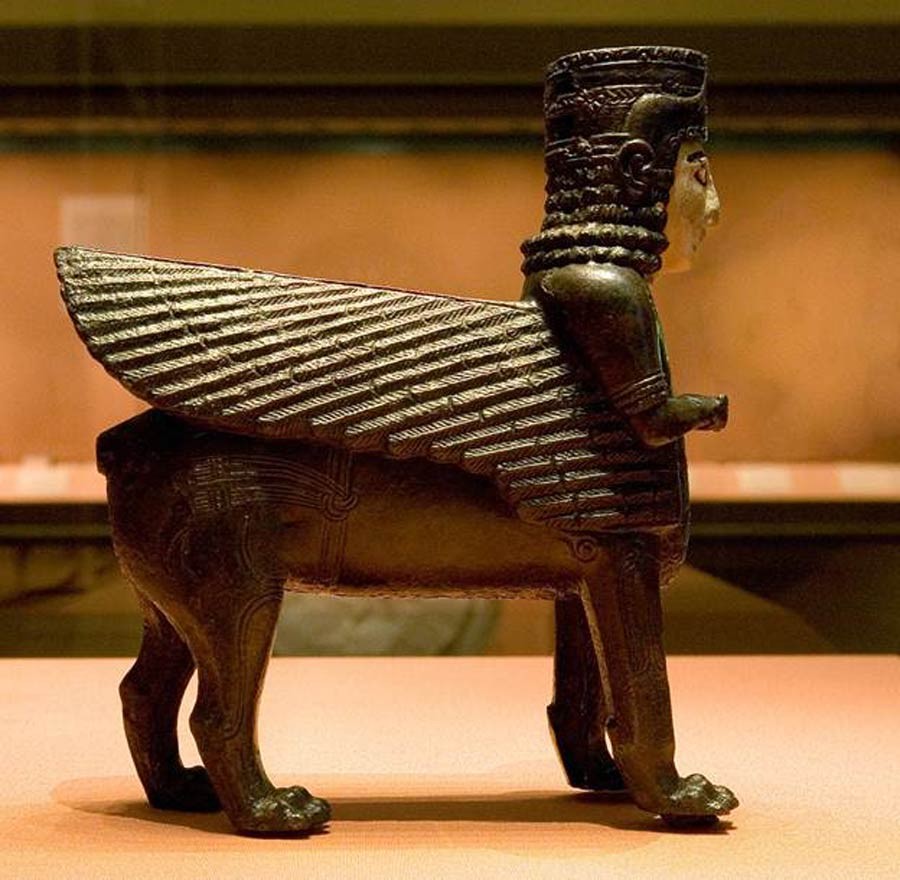
From the start, Urartu was a powerful rival of its neighbor, the Assyrian Empire. Assyrian inscriptions tell us a lot about the ancient Urartu people and culture. The kingdom waned in power during the 6th century BC, before being overcome by the expanding Iranian tribe of Medes. Today, the realm of Urartu is connected with the identity of the people of Armenia and plays a major role in that nation’s nationalism. In modern historiography however, Urartu continues to be a subject of much research. One topic that still needs a lot of study is the pantheon of this ancient kingdom. Who were the enigmatic Urartian gods?
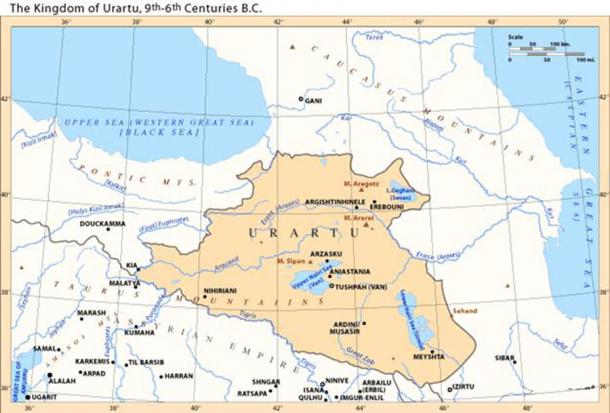
The Earliest Significant Mentions of the Urartian Gods
The Urartian Kingdom consisted of an ethnically and linguistically diverse populace, comprised of many diverse tribes that stretched over Anatolia, Caucasia, and north-western Iran. We first learn about Urartu in the mid-1200’s BC, from the inscriptions left behind by the Assyrian ruler Shalmaneser I. There, “Uruartri” is mentioned as one of the small kingdoms of the Armenian Highlands, which were under repeated attacks from the powerful Neo-Assyrian Empire. The next significant mention is dated to the 9th century BC, when Urartu emerged as a powerful northern rival of the Assyrians. By that time, the first known king of Urartu, Arame, had successfully unified the small kingdoms of the highlands into a powerful entity.
- The Armenian Alphabet, A Vision From God
- Vahagn: The Armenian Dragon Slayer God and Bringer of Fire
We first find significant mention of the Urartian pantheon by the time of the kingdom’s fourth king: Išpuini (Ishpuini). This ruler reigned from roughly 828 to 810 BC and was noted for conquering the lands of the neighboring Mannaeans by capturing their capital city of Muṣaṣir. He then made this city the religious capital of the Urartian kingdom, slowly transforming it into their most holy city. A sprawling temple, dedicated to one of the three supreme Urartian deities Ḫaldi was built in the new city.
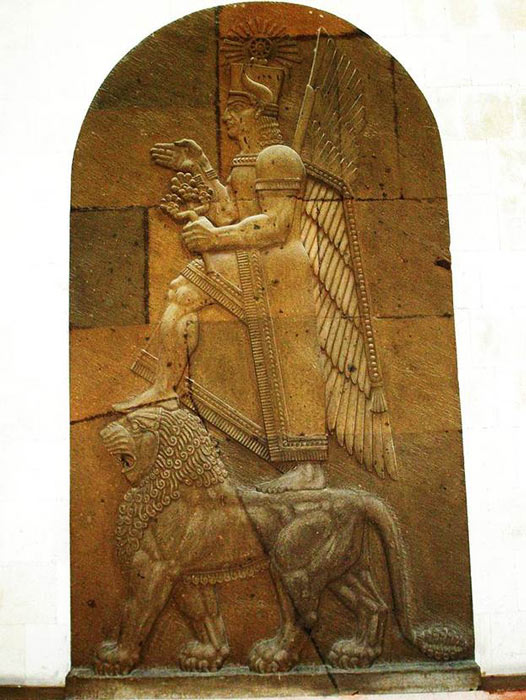
Urartian God #1: Ḫaldi From Obscurity to Chief Deity
Modern scholars agree that Ḫaldi (Khaldi), was not a native Urartian god, but rather one that was adopted during the reign of King Ishpuini, and given a chief position in the pantheon. Sources state that this was a lesser-known, obscure Akkadian deity worshipped in the town of Musasir, and was not very well known to the Urartians when they conquered the city. It is proposed that the selection of Ḫaldi as the new, chief Urartian deity and the protector of its dynasty was done with the intention of unifying the different tribes under Urartian rule and thereby creating a new collective identity.
What little we know of Ḫaldi tells us that it was an Akkadian deity originally, and his nature can be compared to the Greek sun god Helios . In general, Haldi was an all-giving god, but mostly connected with war and victory. Urartian kings would pray to Khaldi in order to gain success in battle.
Haldi was portrayed as a powerful man standing atop a lion, often winged. His temples, the largest of which was at Musasir, were often called the “houses of weapons,” since they were adorned with bows, spears, swords, axes, and shields.
Modern scholars connect the name “Khaldi” with the Hurrian word “Haldi,” which means “high.” Hurrian is an extinct Hurro-Urartian language spoken by the ancient Hurrians (Khurrites). This again is another example that supports the idea that much of the Urartian pantheon was not native, but instead adopted from Hurrian, Hittite, Akkadian, Luwian, and other neighboring cultural pantheons.
Haldi is the most widely referred to Urartian god in all the archeological finds related to Urartu. Ancient Urartian kings raised stone stelae to honor Haldi, inscribing their victories on them.
In some inscriptions, the wife of Khaldi is referred to as Bagmashtu, an obscure deity. However, most often his wife is the goddess Arubani.
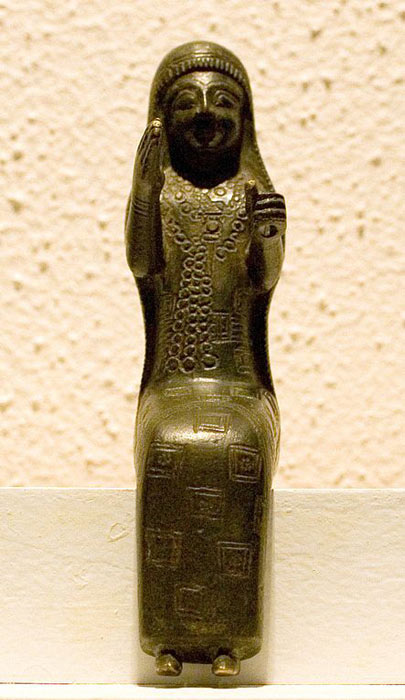
Urartian God #2: Arubani
As the wife of the supreme god Haldi, Arubani is a relatively obscure Urartian goddess of fertility and art. Some state that she was therefore the patron god of artists. She is depicted as a seated woman with her hands raised in a giving expression, with one hand grasping a branch, the symbol of fertility. Some propose that she was the early, proto version of the later Armenian goddess Anahit. Much like Arubani, Anahit was the goddess of fertility, healing, wisdom, and water.
Arubani’s name is variously attested also as Varubani or Uarubani, while some Assyrian texts curiously connect her with the goddess Bagmashtu. The religious center of Musasir, home of the chief deity Haldi (Khaldi), was also the center of worship for Arubani, his consort.

Urartian God #3: Teišeba
Known also as Theispas, Teišeba was an important Urartian god. A deity related to weather, he was a storm god, connected with thunder and rain, and sometimes even to war. Some sources state that Teišeba was the third of the three most important Urartian gods. It is likely that this deity is similar, if not the same, to the Assyrian rain god Adad, and most likely, to the Hurrian storm and rain god Teshub, whose name is quite similar.
The Urartians erected the city of Teishebaini (known now as Kamir Blur) in honor of Teišeba. The town was situated in the Ararat Valley and its earliest origins are in the 7th century BC. The first excavations at this site began in 1939, led by the Soviet archeologist Boris Piotrovskii, and over the course of the digs many temple complexes devoted to this god were uncovered, together with statuettes and inscriptions bearing his name. Teišeba was depicted as a man with a bull-horned helmet, holding a disc-shaped mace in one hand and a battle axe in the other. These were symbols related to his primary elements: war and thunder.
- Zorats Karer: The Incredible History of the 7,500-year-old Armenian Stonehenge
- The Cult of Mithra: Sacred Temples, and Vedic Legends, and Ancient Armenian Understanding
The wife of the Urartian god Teišeba was known as Huba, and she is connected to the Hurrian goddess Hebat. The latter was a mother goddess “of all living things,” and it is likely that Huba had a similar role. However, not much information about the enigmatic Huba deity has survived the ages.
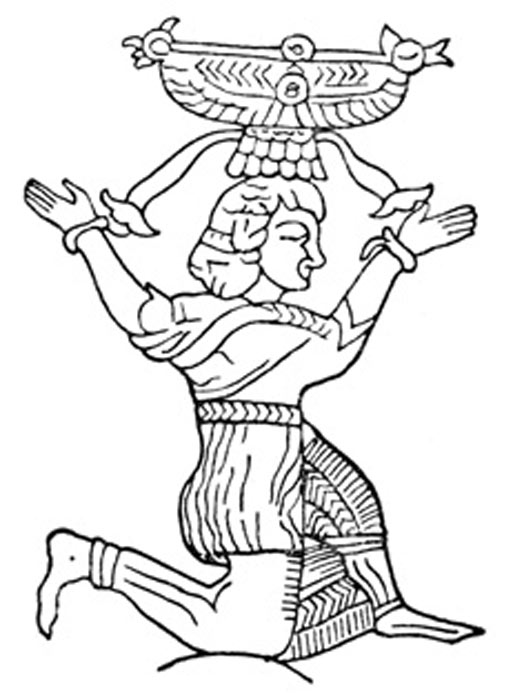
Urartian God #4: Šiuini
More commonly known as Shivini, Šiuini was another major Urartian deity, a solar god and the third deity of the central Urartian trinity, along with Khaldi and Teisheba. Šiuini was usually depicted as a young man with long hair, kneeling with one leg and holding a solar disc above his head. Some scholars link him to a Hurrian deity Šimigi, who shared the same traits. Others state that Šiuini was the Urartian counterpart to the Assyrian sun god Shamash, who was also a god of justice and wisdom. Not much else is known about the enigmatic Šiuini.
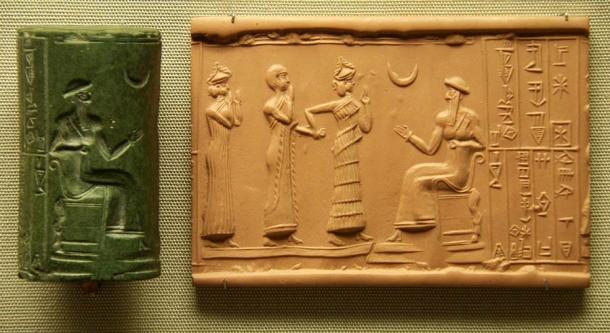
Urartian God #5: Selardi
This enigmatic deity is only partially attested, but undoubtedly held great significance for the Urartians. There is evidence that its name could have been Melardi, and that it was a moon deity. Scholars are divided whether this was a male or female god, but either way, significant attention has been devoted to studying this deity. Some propose that the name Selardi is a mix of “Siela,” meaning “woman,” “sister,” and “Ardi,” meaning “sun god.” This could indicate that Selardi was a goddess, the “sister of the sun god.” In the ancient Near East, the moon was considered as the sister of the sun.
Some scholars propose that Selardi was the Urartian version of the Babylonian moon deity, Sin.
However, there are others that propose that the actual name of this deity was Melardi. To that end, they have connected the name to that of Melartua, an Urartian prince and the son of legendary King Rusa I. Both names likely stem from the word “meghard,” meaning “moon.”

The Urartian Gods Reflected in Religious Practices
Over the course of the decades, as modern archeologists have studied Urartu through their excavations, more and more details pertaining to the Urartian pantheon have been revealed. However, a lot of it is still only superficial, and besides some scattered names and details, not much is known about these gods and goddesses. Some of these names are Saris, the possible Urartian version of the goddess Ishtar; the god of land, Keura; Šebitu, a mysterious deity whose servant King Rusa III claimed to be; and others.
But as we study the other aspects of the Urartu culture as a whole we can see the pantheon and the religion reflected in many other aspects of the Urartian life. Of course, for Urartian kings and leaders, religion was an important tool that allowed them to unify the many tribes under their rule and, in a way, to centralize their government.
The royals of the Urartu Kingdom were buried in lavish and large tombs, which were often rock cut and cavernous, located on rocky promontories. One notable example is the royal necropolis at the capital city of Tushpa (later known as Van), where there are many chambers perfectly cut into the mountain itself. The citadel city of Van was located on top of that mountain.
These lavish and rich tombs certainly took a lot of effort to construct, and most of them have one, two, or three chambers. Sadly, most of these tombs were looted in antiquity, even though they were sealed with immense stone slabs. But what little remained in them shows us a deep reverence of the Urartian gods.
Also, the intact tombs reveal a good deal of the religious beliefs of the Urartians. They were buried in stone sarcophagi, together with exquisite grave goods, including weapons, shields, vessels, and furniture. This indicates that they too believed in an afterlife, which was perhaps connected to one of their chief deities.

The Urartian Gods Demanded Sacrifice
The enigmatic gods of the Urartians were represented in exquisite religious art. These could have served as objects of worship in temples, personal offerings, or as protective amulets and trinkets. The gods represented most often, in the form of bronze figures, were Khaldi, Shivini, and Teisheba, the three chief gods. Today, these bronze figures are the perfect insight into the physical appearance of the gods, as the Urartians imagined them.
There are also figurines made from animal bones, mostly of goddesses that remain unidentified. Other creatures represented have the hybrid form of a scorpion-man, bird-man, or a fish-man. Whether these were demons, mythical creatures, or gods, remains unknown. These hybrids were often painted on walls of storerooms and other objects, which could indicate that they were protective spirits of some sort.
As in many ancient religions, sacrifices were an important aspect of daily Urartian religious life. The Urartians offered lavish objects as sacrifice, but also animals, such as goats, cows, sheep, bulls, and others. The chief god Haldi, for example, received offerings of weapons, as he was considered the god of war.
One unique ancient Assyrian inscription, made during the time of Sargon II (700’s BC), tells us of the great mass of weapons stored in the temple of Haldi in the city of Muṣaṣir. The inscription states that the temple held: “ 25,212 bronze shields, 1,514 bronze javelins, and 305,412 swords […] One large sword, a weapon worn at his waist, of gold; 96 silver javelins, silver bows and silver spears, inlaid with gold and mounted; 12 heavy shields, 33 silver chariots . . .”
- The Legacy of Armenia: Trade, Metallurgy, and Forging of Precious Metals of the Ancient World
- The Everlasting Shoe: What Does This 5,500-Year-old Shoe Found in a Cave Tell Us About Ancient Armenians?
Other sacrifices and offerings were made using huge bronze cauldrons, of which many have been found. These lavish bronze vessels likely held great quantities of wine, mead, or other important beverages, given as an offering to appease the gods.
There is Still a Lot to Be Discovered
Even though the culture and civilization that existed in Urartu remains quite a mystery to us, every year new evidence of this culture is being unearthed. Archaeological excavations in numerous Urartian sites are in full swing. So, even though we don’t know a whole lot about the Urartian gods, a whole lot of new information may be discovered in the coming years.
Either way, all lovers of history eagerly wait for new finds and thrilling insights to emerge from the ancient fabrics of history.
Top image: A bronze statue of Lama, Lamma, or Lamassu, an Assyrian protective deity that became one of the Urartian gods. Source: EvgenyGenkin / CC BY-SA 4.0
By Aleksa Vučković
References
Cartwright, M. 2018. Urartu Religion. World History Encyclopedia. Available at: https://www.worldhistory.org/Urartu_Religion/
Chahin, M. 2001. The Kingdom of Armenia: A History. Psychology Press.
Marek, C. 2018. In the Land of a Thousand Gods: A History of Asia Minor in the Ancient World. Princeton University Press.
Various, 2014. Assyria to Iberia at the Dawn of the Classical Age. Metropolitan Museum of Art.



